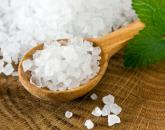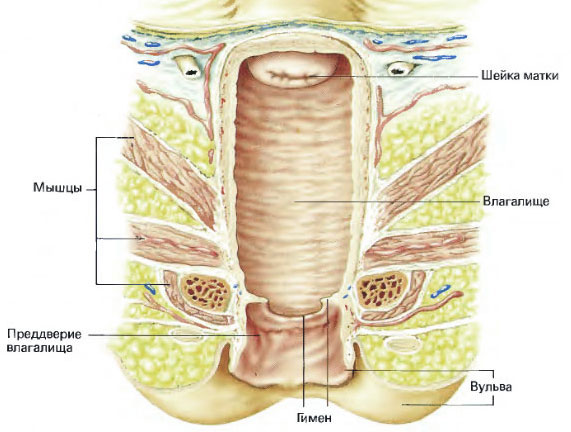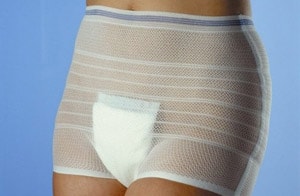White mucous discharge after childbirth. Week and their color. Mucous discharge after childbirth
After giving birth, a young mother has many questions: is everything OK with the baby? How to properly apply the baby to the chest? What to do with the umbilical wound? How many go and when discharge stops after childbirth?
When does the discharge end after childbirth?
Often after childbirth, a woman does not pay any attention to herself - it all goes to the newborn. Meanwhile, the postpartum period is fraught with many dangers for the puerperal. Immediately after the afterbirth departs, the woman begins to have very strong bleeding - lochia. Blood from the wound at the place of attachment to the uterus of the placenta, the epithelium that washed the uterus during pregnancy, begins to be rejected - all this, mixing with mucus from the cervical canal, pouring out of the genital tract.
When are the discharge after childbirth? Normally, the duration of discharge after birth should not be more than 6-8 weeks.
In the first two hours after childbirth, while the woman is still in the delivery unit or on a gurney in the corridor, doctors observe the nature of the discharge. This period is especially dangerous in the development of hypotonic bleeding, when the uterus stops contracting. To avoid complications, a woman puts an ice pack on the lower abdomen and injects drugs to improve the contraction of the uterus. If the blood loss does not exceed half a liter and their intensity gradually decreases, then everything is in order, the puerperal is transferred to the postnatal ward.
Within 2-3 days after childbirth, discharges from women have a bright red color and a rotten smell. Bleeding is quite strong - the pad or bedcloth diaper has to be changed every 1-2 hours. In addition to blood, small clots can be released from the genital tract. This is normal - the uterus is gradually cleared of all unnecessary and reduced in size.
In the following days, the lochia gradually darkens, becomes brown, and then yellowish (due to the large number of leukocytes). A month later, discharge after childbirth is more like mucus, and in some women it may stop altogether. On average, after 1-2 months, the uterus returns to the size before pregnancy. 5 months after birth, discharge may already be menstrual, since usually the monthly cycle is restored by this time.
Often young moms ask their doctor a question: how long do the discharge after childbirth and what signs may indicate a possible disadvantage. Indeed, doctors carefully monitor the nature, consistency of secretions, pay attention to their color and smell, because their change is the very first sign of the possible development of the inflammatory process in the female genitals, first of all in the uterus, her neck and vagina. In some cases, the pathology of the internal organs and the state of the blood coagulation system can influence the state of the discharge.
Postpartum discharge: normal and abnormal
Regardless of the way in which the delivery was carried out, after delivery for quite a long time from the genital tract of the young mother, there are bloody discharge of varying intensity. This is because the inner surface of the uterus after the separation of the fruit membranes and the placenta is an open wound surface. 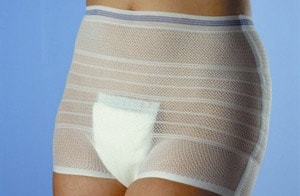 In the process of childbirth (in their third period), during the normal course of the process, the functional layer of the endometrium that is thickened during the entire gestation period is rejected. At the same time, a reduction in the size of the uterus begins - the doctor assesses the recovery of the body of the young mother exactly on the basis of the dynamics of these cuts and the nature of the discharge.
In the process of childbirth (in their third period), during the normal course of the process, the functional layer of the endometrium that is thickened during the entire gestation period is rejected. At the same time, a reduction in the size of the uterus begins - the doctor assesses the recovery of the body of the young mother exactly on the basis of the dynamics of these cuts and the nature of the discharge.
In the first hours after childbirth, the intensity of the discharge remains quite high - in the early postpartum period, you should not use any pads to remove them; preference should be given to absorbent diapers. Despite the fact that this seems inconvenient to a woman, it is easier for the doctor to assess the intensity of discharge after childbirth, and the diaper itself can be thrown out after use without regret.
In the first hours and days after birth, the discharge has a persistent sweet smell of blood - they are 80% composed of unchanged blood, and the rest is the secret of the uterine glands, which after labor begin their intensive work, because the restoration of the mucous membrane begins immediately after the completion of the birth process.
A sharp decrease in the amount of discharge will be considered a deviation from the normal course of the postpartum period, which indicates the appearance of a spasm of the cervix (this is fraught with infections) and an excessive increase in their number, indicating a violation of the contractile activity of the uterus. In this case, the doctor may also suspect blood clotting disorders - with the development of DIC, immediate intensive medical measures are required, because this complication threatens the patient's life.
Postpartum discharge: cause and duration
 The immediate cause of the postpartum discharge is the rejection of the uterine mucosa, which is inevitably accompanied by rupture of blood vessels. Doctors believe that in the normal course of events, the duration of the discharge stretches to 6-8 weeks. At the same time, a woman, after being discharged from the maternity hospital, must independently monitor the amount of discharge, the consistency, and the smell.
The immediate cause of the postpartum discharge is the rejection of the uterine mucosa, which is inevitably accompanied by rupture of blood vessels. Doctors believe that in the normal course of events, the duration of the discharge stretches to 6-8 weeks. At the same time, a woman, after being discharged from the maternity hospital, must independently monitor the amount of discharge, the consistency, and the smell.
Normal discharge after childbirth
In the first 2-3 days after birth, the discharge should be sufficiently abundant, but not more than 400 ml per day (approximately 5-6 special postpartum pads), their color should be bright red, they can be noticeable admixture of mucus and blood clots. This situation is considered perfectly normal, and any deviation from the norm should force you to immediately seek qualified medical assistance - even in the hospital, you should immediately tell the doctor.
Gradually, lochia (this is the name of the discharge after childbirth) changes color - first becoming brown, and then, by the end of the late postpartum period (6-8 weeks), should become slimy. Usually, by the end of this time interval, a woman who has stopped breastfeeding (regardless of the cause) begins the first menstruation after delivery. If breastfeeding continues, then menstruation does not occur (in a woman, in this case, the maturation of the egg is suppressed), but the discharge must stop by this time. Otherwise, if you continue to allocate lohii, you also need an immediate consultation with a doctor, who can determine the true cause of this condition.
 Each woman's recovery in the postpartum period takes place individually, and you need to pay attention to many circumstances.
Each woman's recovery in the postpartum period takes place individually, and you need to pay attention to many circumstances.
Nevertheless, there are situations in which you must immediately look for the true cause of deviation from the average statistical norm. These include:
- rapid cessation of discharge - lochia cease earlier than 5 weeks after delivery. Such a state is not evidence of a good recovery of the body of a young mother, but of the resulting disturbances and possible complications. Often the cause of this situation is cervical spasm, which provokes a delay in discharge in its cavity, which threatens infectious complications. It is important to remember - the functional layer of the endometrium cannot recover faster than 40-50 days, but until this happens, the discharge should be maintained;
- discharge does not change its color, remain bright red after 5 days after birth. This indicates pronounced disorders in the coagulation system of the woman or impaired blood formation, which also requires timely diagnosis and treatment;
- re-change of color of secretions from brown to red - these phenomena indicate the development of intrauterine bleeding. It is necessary to immediately examine the patient, which helps to find the cause of this condition (the formation of a polyp, the presence of gaps in the soft tissues of the birth canal during labor);
- the appearance of an unpleasant smell (any) - a putrid or sweetish odor indicates the penetration of endometritis into the uterine cavity. In this case, you need a prescription drugs that suppress the development of microorganisms, means that enhance the contraction of the uterus, in some cases - carrying out curettage.
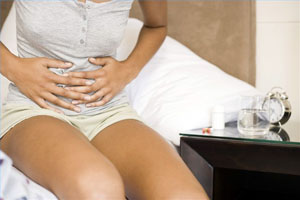 In addition to the appearance of an unpleasant odor of discharge, other symptoms may indicate the development of infection in the birth canal. That is why the doctors advise the young mother to carefully monitor their health and not to justify themselves the need to care for the child and keep the household. It is worth remembering that a child needs a healthy mother, and in most cases a visit to the doctor does not require a full day of time. If in doubt, a qualified doctor's examination, laboratory and instrumental examinations will help establish the true diagnosis.
In addition to the appearance of an unpleasant odor of discharge, other symptoms may indicate the development of infection in the birth canal. That is why the doctors advise the young mother to carefully monitor their health and not to justify themselves the need to care for the child and keep the household. It is worth remembering that a child needs a healthy mother, and in most cases a visit to the doctor does not require a full day of time. If in doubt, a qualified doctor's examination, laboratory and instrumental examinations will help establish the true diagnosis.
What you need to pay attention to:
- the appearance of unpleasant, especially painful, sensations in the lower abdomen;
- the occurrence of common signs of intoxication - headache, dizziness, body aches, pain in the joints and muscles;
- a sharp and sudden increase in body temperature, especially in the case when a woman has no signs of lactostasis;
- decrease or increase in the volume of discharge, change their smell.
If there is any suspicion of the possibility of developing infectious complications, treatment should begin as soon as possible. It is worth remembering that blood and mucus, which make up most of the discharge after childbirth, are ideal nutrient medium for microorganisms, and the open wound surface of the uterus allows toxins to easily enter the systemic circulation, which creates an opportunity for the spread of infection and the development of sepsis.
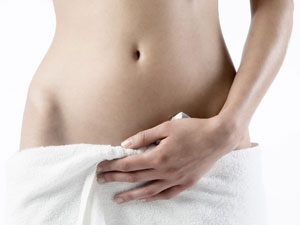 In order to avoid such a situation, a young mother needs to know the basic rules of hygiene in the postpartum period and carry them out - these procedures do not take much time, but following them will reduce the likelihood of infectious complications.
In order to avoid such a situation, a young mother needs to know the basic rules of hygiene in the postpartum period and carry them out - these procedures do not take much time, but following them will reduce the likelihood of infectious complications.
- You need to carefully select sanitary pads - for the first days of the postpartum period, you can use special pads after childbirth or absorbent diapers that the doctor can inspect in the maternity hospital. Shyness at this time is completely inappropriate - even if a woman is watched by a male doctor, he looks at her as an object of application of his professional knowledge.
- After discharge from the maternity hospital, you can use the usual pads, designed for use during menstruation, but with a high degree of absorption.
- It is necessary to change the pads in a timely manner - no less than every 4-6 hours, but the main criterion should be not the time, but the degree of wetting of the diaper (pad) used.
- It is strictly forbidden to use at this time, even if there are very good reasons for tampons (vaginal) of any manufacturer.
- Cotton wool for the manufacture of homemade pads can be used, but this material should be discarded - today, quality cotton and gaskets made specifically for feminine hygiene are worth quite comparable sums of money, so saving on such a replacement will not succeed.
- The toilet of the external genital organs is obligatory - in this case it is possible to use ordinary baby soap. It is important to control the direction of water flow when performing procedures - the jet should be directed only from front to back.
- If the doctor prescribes the treatment of sutures applied to the perineum, then antiseptic solutions (furatsilin, potassium permanganate), as well as alcoholic solutions of aniline dyes can be used directly at the surgical site.
- The use of ointments, including antibiotics, can be prescribed only by a doctor.
- A full toilet of the external genital organs can only be carried out with the help of a shower or devices that replace it - bathing is contraindicated.
 It is important to remember that breastfeeding a child contributes to the normal reduction of the uterus - in the process of stimulation of the mammary gland in the body oxytocin is secreted, which affects the contractility of the uterus. It is important to feed the baby on demand - this is how you can establish a normal mode of breastfeeding, and contribute to a good reduction of the uterus. The normal course of the postpartum period is evidenced by increased discharge after each feeding and the appearance of small cramping sensations or mild pain in the lower abdomen.
It is important to remember that breastfeeding a child contributes to the normal reduction of the uterus - in the process of stimulation of the mammary gland in the body oxytocin is secreted, which affects the contractility of the uterus. It is important to feed the baby on demand - this is how you can establish a normal mode of breastfeeding, and contribute to a good reduction of the uterus. The normal course of the postpartum period is evidenced by increased discharge after each feeding and the appearance of small cramping sensations or mild pain in the lower abdomen.
The question of which methods can be used to determine pregnancy, how reliable they are, sooner or later can affect practically ...
The baby's waiting period is a wonderful time when you want to fly, despite the increasing weight. This is a time of trouble and worries, a time about ...
The postpartum period is the recovery time of the female body. Spotting after childbirth is part of this stage. About why they happen and how much should last talk below.
 After the baby is born, there are still accumulations of blood, mucus, particles of dead tissue and placenta in the uterus. This is all called Lochia., they must leave the body of a woman.
After the baby is born, there are still accumulations of blood, mucus, particles of dead tissue and placenta in the uterus. This is all called Lochia., they must leave the body of a woman. In addition, the uterus itself is damaged during childbirth. An open wound from a detached placenta with many damaged vessels remains on it.
It is from the blood, oozing from the healing wound, and the lohia that the postpartum discharge consists. This is a completely natural process of cleansing the body.who do not need to be afraid. In the first hours it is most active and intense. Since the muscles of the uterus begin to contract, trying to take a natural form, and push all the excess.
It is impossible to completely avoid bleeding after childbirth, since the placenta in any case, detaching from the uterus, damages it. But gradually the amount of discharge should decrease. If this does not happen or the bleeding increases, urgently need medical attention.
To avoid worsening your condition, follow these guidelines:

- from time to time, roll over onto the belly, this will help the uterus to cleanse faster;
- every 2–3 hours empty your bladder, even if you don’t feel like it, as a full bladder prevents the uterus from contracting;
- periodically apply a cold heating pad to the lower abdomen for 10–15 minutes, this contributes to the narrowing of the vessels;
- avoid any physical exertion;
- breastfeed, as this leads to a reduction of the uterus and its speedy cleansing.
 The first days after birth are particularly dangerous. Firstly, all the Lochiae, which are a favorable environment for the reproduction of microbes, have not yet come out. Secondly, the wound in the uterus is open and can be easily infected.
The first days after birth are particularly dangerous. Firstly, all the Lochiae, which are a favorable environment for the reproduction of microbes, have not yet come out. Secondly, the wound in the uterus is open and can be easily infected. To avoid complications need to follow simple rules of hygiene:
- On the first day, use sterile diapers instead of gaskets. Then you can go to the usual gaskets to which you are accustomed, just take the maximum number of drops. It is necessary to change such gaskets 8–9 times a day.
- After using the toilet, wash the perineum with warm water, directing the jet from top to bottom. Need to use baby soap. Wash permits only the outer surface.
- It is necessary to take a shower every day, but in no case a bath.
- Use any ointment for healing is possible only with the permission of the doctor.
- It is strictly forbidden to wear tampons instead of pads. This will not only delay the release of lochia and increase the possibility of infection, but can also damage the vagina.
How long do the discharge after childbirth
How long, how many days are the discharge after delivery? It is quite normal when the blood discharge after childbirth last up to 2 months. Therefore, do not panic. For some women, the recovery process ends by the sixth week, but such cases are rare. Medical assistance should be consulted if the discharge lasts more than 2 months. This may indicate the occurrence of complications.
It is difficult to accurately draw up a single schedule of secretions, since this physiological process is based on the individual characteristics of the organism. However, there are certain average rates of discharge after childbirth:

- The first 3-5 days - intense light red discharge. At this point, the woman is under constant medical supervision. The amount of discharge can reach up to 400 ml per day.
- 5–6 days - The amount of discharge decreases markedly, they acquire a brown tint. May contain blood clots and mucus. Strengthened by physical exertion. During this period, if there are no pathologies, a woman is discharged.
- 11–14 days - discharge after birth acquire a brown-yellow color, which gradually brightens to white. This process can last up to a month.
With this highlight should not be accompanied by pain, fever or itching.
Pathological discharge, their cause and when it's time to see a doctor
We list the situations in which you must seek medical advice:

- Termination of discharge before the fifth week. This may be due to uterine spasm. In this case, lochia can not get out of the body, which leads to infectious complications.
- The color of the discharge remains bright red after the first 5 days. This may indicate a bleeding disorder or bleeding that has opened.
- After the selection turned brown, they turned red again. Indicates intrauterine bleeding.
- Discharge after childbirth acquired a putrid or sweetish, unpleasant odor, which may be caused by the development of an infection in the uterus.
For any of the above violations urgent need to consult a doctor. Delay can lead to serious consequences, even death.
Share with us your experience, what hygiene products you used after giving birth, how quickly the recovery process went. The real experience of moms and their hints for those who still have to go through it is very important for our readers!
It is unlikely that someone will deny that pregnancy and childbirth make serious adjustments to the work of the female body. Of course, after giving birth everything will fall into place, but this is only with time.
What is postpartum recovery?
Postnatal recovery involves many steps and takes time, but the most obvious and in fact the first sign that everything “falls into place” is the discharge from the uterus. Their medical name is Lochia. What do they represent?
For the most part, these secretions consist of dead blood cells, or rather, its main components - red blood cells and platelets. Also there is the presence of mucus, which was in the cervical canal and particles of dead epithelium. A woman's health depends on whether these tissues are completely removed from the body, because only after complete cleansing can he properly and fully recover.
The duration of postpartum discharge is of considerable importance and is an indicator of women's health. Regardless of whether the birth was natural or the doctors resorted to cesarean section, in the first few days (not more than 5), the discharge is bright red with blood clots. By nature, they resemble those during menstruation, but they are more abundant. From about the 5th to the 7th day, the discharge becomes brown, but less intense.
If we talk about the duration of discharge, it depends on many factors and is more an individual indicator. For example, the decisive factor in duration and intensity is how quickly and often the uterus contracts, although the entire pregnancy and the birth itself also have an effect. Doctors can check the uterine contraction by ultrasound and, if necessary, prescribe drugs that would stimulate its contraction.
It is worth considering that the number and duration of discharge also depends on whether there were tissue breaks and cuts during childbirth. The depth of ruptures in the birth canal will also to a certain extent determine the intensity and duration of the discharge. The deeper and stronger they are, the longer the discharge will be and the more abundant they will be. In addition, tissue breaks can trigger the development of the inflammatory process in the body and thereby slow down the recovery period. Hematomas caused by suturing can also lead to this.
Slow involution may be an obvious sign that an inflammatory process occurs in the body. In addition, the uterus bend, infantilism, poor blood clotting, fibromatous nodes and other pathological abnormalities can slow down the recovery process. Sometimes they even resort to cleaning the uterus, because the remaining part of the placenta can cause heavy bleeding.
To increase the frequency of contractions of the uterus can be with the help of breastfeeding. The mechanism of this relationship is simple: during breastfeeding, the body produces the hormone oxytocin, which contributes to uterine contractions and, accordingly, accelerates the recovery period. Therefore, it is recommended to feed the baby on demand after delivery. The same action can be achieved if the woman in labor will, if possible (sometimes it is very painful), lie on her stomach and regularly empty the bladder in a timely manner.
In most cases, discharge within about one month is considered to be within the normal range, although up to 6 weeks can be observed. Any deviations from this require consultation and observation of a physician, so it is necessary to notify in the event of manifestation of non-typical phenomena.
What is the alarm
An alarming sign of danger is the unpleasant smell of postpartum discharge, fever and chills. All this indicates that the body is infected, and therefore, the restoration of the body depends entirely on whether it is eliminated. Do not close your eyes to the appearance of yellow discharge or white. The latter can be a sign of development, especially if they have a curd consistency characteristic of the disease.
All these unpleasant phenomena can be avoided if you follow some rules. For example, do not forget about careful personal hygiene. It includes a regular change of pads, visiting the shower, washing with herbal decoction (it is especially desirable to use herbs with anti-inflammatory properties, such as calendula or chamomile). It is also possible to wash out potassium permanganate solution for flushing, but make sure that its concentration in water is not too high, otherwise you can burn the mucous membranes of the organs. For a period of time while bleeding is observed, bathing in the bathroom should be avoided.
Every woman who gave birth in her life at least once knows that after the completion of labor in the body, serious changes begin. It is also accompanied by secretions of various kinds: bloody, brown, yellow, etc. Newly-born mothers get very scared when they see these discharges, start to worry that an infection has penetrated into their bodies, bleeding has begun, etc. However, this is normal and this process cannot be avoided.
The main thing is to ensure that the discharge does not exceed the norm, and that there is no pain, otherwise you will need the help of a gynecologist.
How long does the discharge last after birth?
How long does the discharge last after birth? In general, postpartum discharge is the scientific name of lochia. They begin to appear from the moment of postpartum rejection and usually persist for 7-8 weeks. Over time, lochias become less and less, their color begins to become lighter and lighter, and then the discharge stops.
However, with the accuracy of the question of how long the discharge lasts after the completion of labor, it cannot be answered, since it depends on several factors:
- The physiological characteristics of each woman are different, including the ability of the body to recover quickly after childbirth.
- The course of the pregnancy itself.
- The intensity of the contraction of the uterus.
- The presence of complications after childbirth.
- Breastfeeding a baby (if a woman breastfeeds a baby, the uterus contracts and cleans up much faster).
But, on average, remember, the selection lasts about 1.5 months. During this time, the body gradually recovers from pregnancy and the past birth. If the lochia is over a couple of days or weeks after delivery, you should seek help from specialists, since your uterus does not contract properly, and this is fraught with serious complications. The same applies to the situation where the discharge does not stop a fairly large amount of time, which may indicate bleeding, polyps in the uterus, inflammation, etc.
Discharges one month after delivery
Abundant discharge in the first month is quite desirable - this way the uterus cavity is cleaned. In addition, microbial flora is formed in lochia after childbirth, which can later cause various inflammatory processes within the body.
At this time, you must carefully observe personal hygiene, because the bleeding wound may be infected. Therefore follows:
- wash toilet thoroughly after using the toilet. It is necessary to wash with warm water, and from the outside, but not inside.
- every day, swim, take a shower, bath after childbirth can not be taken.
- in the first weeks, days after birth, use sterile diapers, rather than sanitary pads.
- during a certain time after birth, change the pads 7-8 times a day.
- forget about using hygienic tampons.
Remember that after a month of selection should be a little lighter, because soon they should stop altogether. Continue to maintain hygiene, and do not worry, everything is going according to plan.
If the discharge after a month after birth continues and they are abundant, have an unpleasant odor, mucous membranes, then urgently to the doctor! Do not over tighten, it can be dangerous for your health!
Spotting after childbirth
A large amount of blood and mucus is secreted in a woman immediately after she has given birth to a baby, although it should be so. All this is due to the fact that the surface of the uterus is damaged, as there is now a wound from the attachment of the placenta. Therefore, the bleeding will continue until such time as the wound on the surface of the uterus heals.
It should be understood that bleeding should not be more than the permissible rate. You can find out very easily about this - if the diaper is over-excreted or the sheets under you will be all wet. You should also be worried if you feel any pain in the uterus or discharge that goes in time with the beat of your heartbeat, which indicates bleeding. In this case, seek medical advice immediately.
Lochia will gradually change. First, it will be a selection that looks like a selection during menstruation, only much more, then they will turn brownish, then yellowish white, lighter and lighter.
Some women have bleeding after childbirth, but they think at first that it is a safe spotting. To avoid bleeding, you must:
- Regular visits to the toilet - the bladder should not put pressure on the uterus, thereby preventing its reduction.
- Constantly lie on the stomach (the uterus will be cleared from the contents of the wound).
- At the bottom of the abdomen in the delivery room, put a heating pad with ice (and in general, obstetricians should do this by default).
- Avoid heavy physical exertion.
Brown discharge after childbirth
Brown discharge is especially frightening for most mothers, especially if an unpleasant odor occurs. And if you read everything about medicine, and gynecology in particular, then you know that this is an irreversible process that you should wait out. At this time there are dead particles, some blood cells.
In the first hours after the end of childbirth, discharge may already become brown, along with large blood clots. But, basically, the first few days of lochia will be purely bloody.
If the recovery period for a woman passes without complications, for 5-6 days the discharge will turn brownish. An interesting fact is that the brown discharge ends much earlier in those mothers who breastfeed their children. The reason for this is the following - lactation favors the quickest uterine contraction.
In this case, brown lochia last longer for those women who had to do.
However, if there is a sharp, purulent odor with secretions of brown color, pay close attention to this. After all, a possible cause of this phenomenon is an infection brought into the body. Therefore, in this case, immediately seek medical attention.
Yellow discharge after delivery
Discharges acquire a yellowish tint for about ten days after the birth has passed. The uterus is gradually restored, and the yellow discharge only confirms this fact. At this time it is important to breastfeed the baby, and also not to forget to empty the bladder in time. Thus, the yellow discharge will cease more quickly, and the uterus will return to its original prenatal state.
However, if immediately after the birth of the baby, you notice that you have a discharge of bright yellow color or with a green impurity, you should tell your doctor about it. After all, such lochia can be caused by the fact that inflammatory processes occur in a woman's body. In addition, the selection of this color is usually accompanied by high fever and unpleasant sensations in the lower abdomen.
Perhaps, in the uterus cavity there was a festering, so you should seek the help of a gynecologist, who will refer you to an ultrasound.
Remember that yellow secretions caused by infection tend to have a sharp, purulent odor. To avoid such consequences, you must observe personal hygiene, as well as be under the supervision of a doctor.
But in general, yellow discharge is a common occurrence and they only confirm that everything is proceeding properly.
What does mucous, green, purulent or odorous discharge after delivery say?
It should be understood that abundant purulent discharge, green lochia are not the norm for a woman's body after childbirth. In most cases, such secretions are caused by the disease endometritis, which occurs as a result of inflammatory processes inside the uterus.
Contraction of the uterus, in this case, occurs rather slowly due to the fact that there are lochia in it. Their stagnation inside the uterus and can lead to negative consequences.
Mucous discharge, if they do not exceed the norm, can be observed throughout the month or one and a half months after the end of the birth. The nature of these secretions will change over time, but they will, to some degree or other, manifest themselves until the inner lining of the uterus is fully restored. It is worth worrying only if the mucous lochia has acquired a purulent, unpleasant smell. If you experience such symptoms should consult a gynecologist.
Always remember that postpartum discharge will occur without fail. Do not raise an alarm about this. Although your doctor should be aware of how the recovery period after childbirth. Write down the number when the selection began, then note when they changed color to brown or yellow. Fix on paper how you feel at the same time, whether there is dizziness, fatigue, etc.
Do not forget that your child needs a healthy mother, so watch your health carefully, observe hygiene, do not ignore the abundant bleeding. If you have any concerns, contact a specialist.
Popular
- What is oral cancer, its profilatika, symptoms and treatment
- How to treat herpes on the lips and body of folk remedies
- Details about fluoroquinolone antibiotics and drug names
- First aid for sprains and fractures
- White cheesy discharge from women - a sign of thrush
- Variants of white discharge before menstruation and all the reasons for their appearance
- Life expectancy for breast cancer
- Consequences of the introduction of poliomyelitis vaccine
- Penicillin antibiotics, penicillin use
- Why does brown daub appear instead of regul

